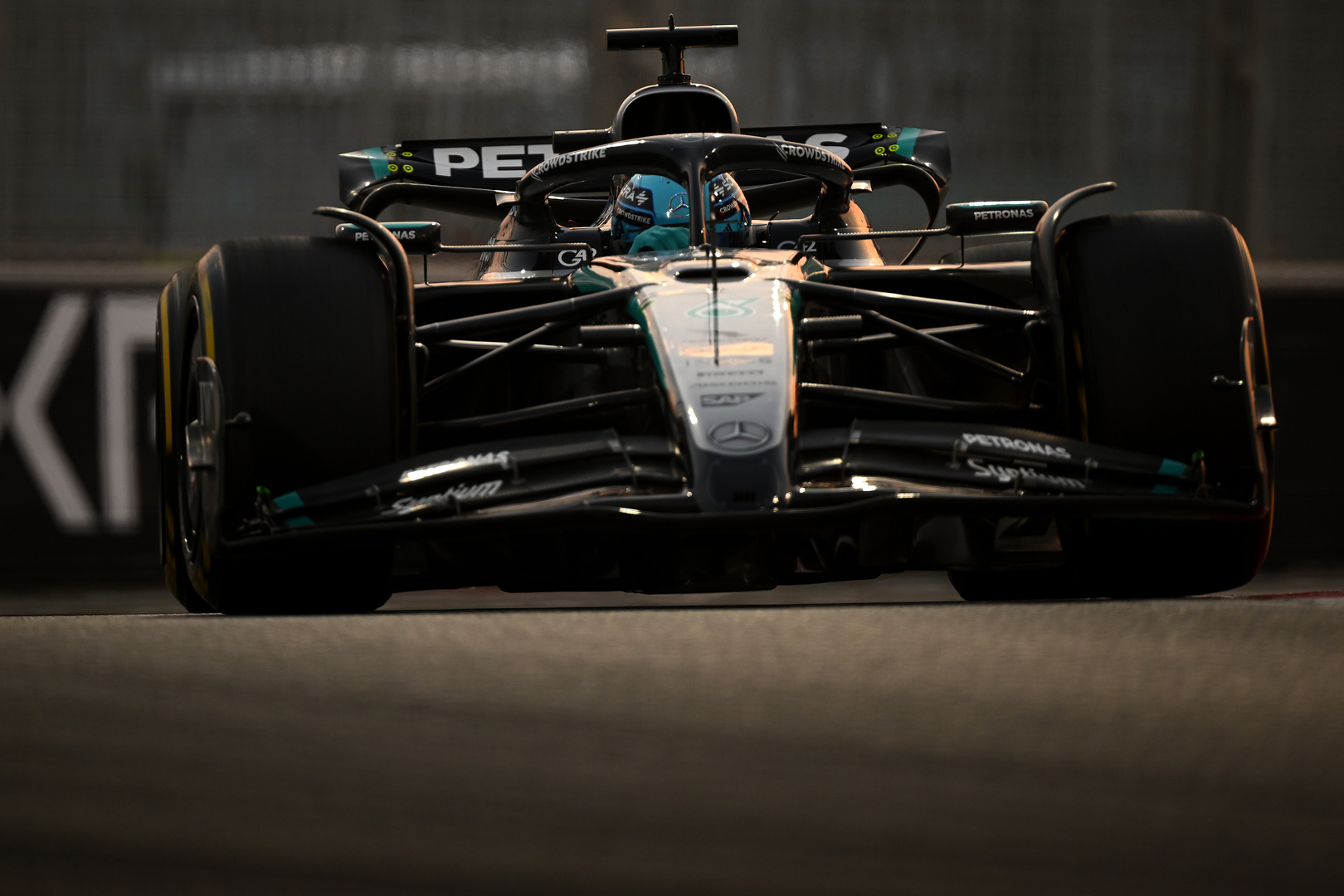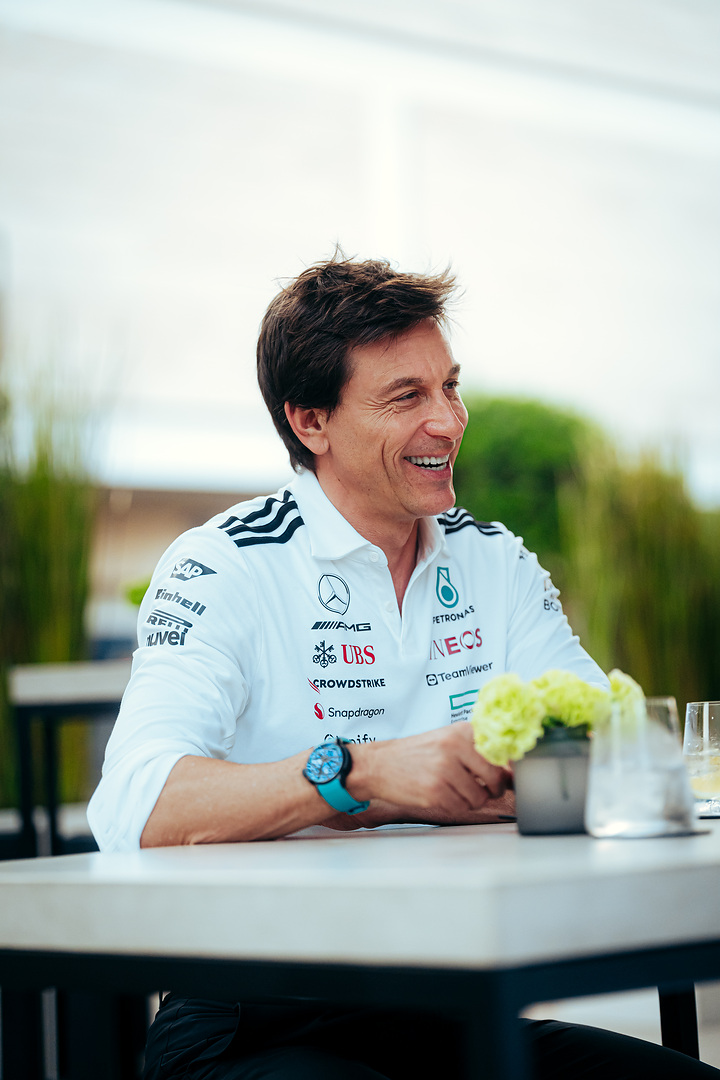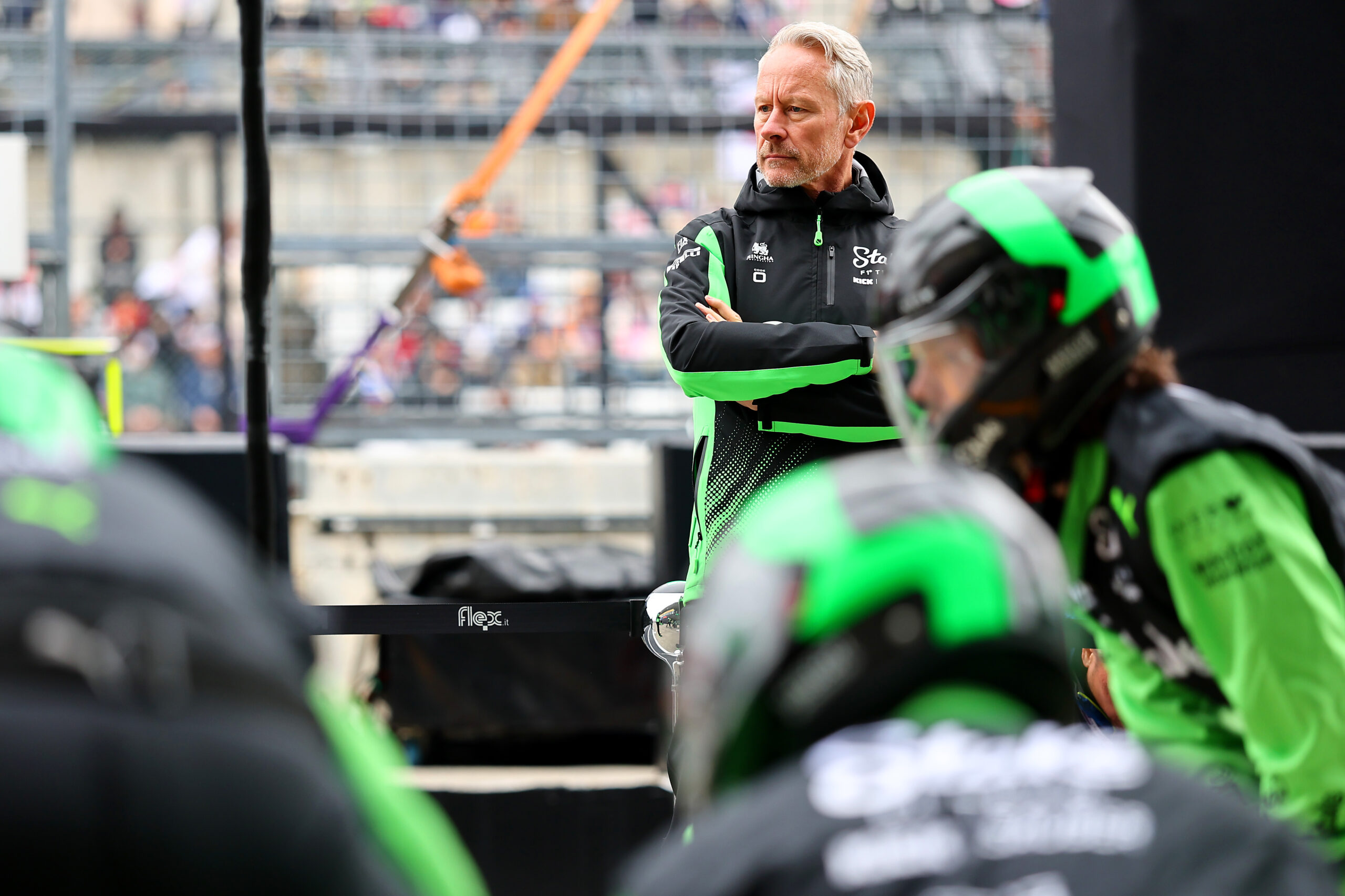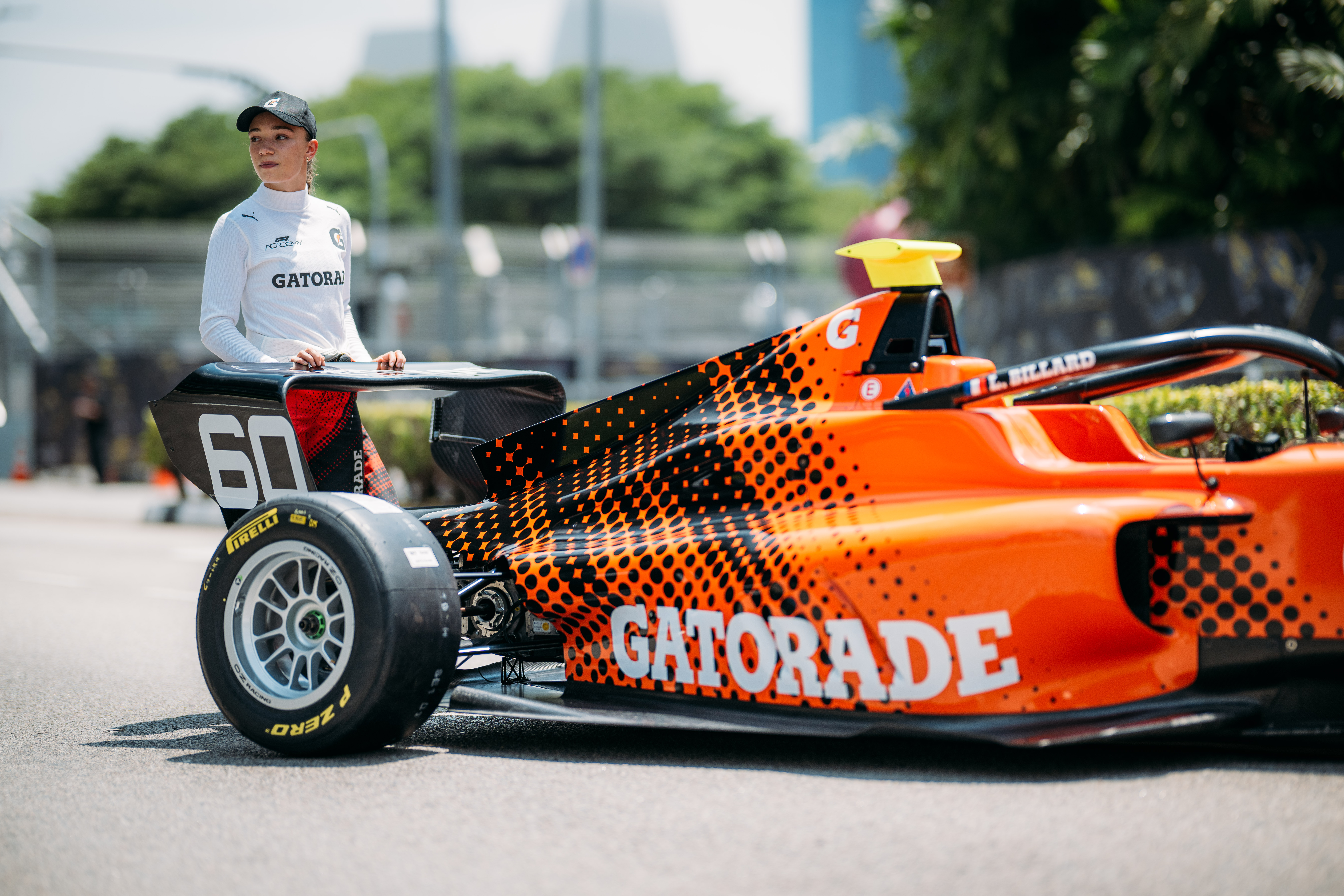George Russell’s sticky run of form continued at the Canadian Grand Prix as he crashed and ultimately retired from the race on Sunday.

Photo credit: Mercedes-AMG Petronas F1 Team
The 25-year-old was running in a solid 4th place and closely tracking Fernando Alonso when he hit the wall on the outside of turn 9 after going over the sausage kerb big time. It was an unforced error from Russell, but somehow he did not pick up race-ending damage. He explained what happened from his point of view.
“I just went a bit wide into Turn 8. I knew I was going to hit the kerb, but I wasn’t expecting the sausage kerb to have such a violent response.
“Next thing, I’m in the air. When I landed, I lost the rear and I was in the wall. It all happened really quite suddenly.
“I did [assume the race was over], to be honest. I was surprised that we managed to continue. I was very close to pulling up. It’s a difficult pill to swallow. But that’s how the sport should be. One small mistake and you should be punished for it.”
Russell’s race ultimately came to an end on lap 55 because the brake wear on the W14 had got dangerously high. Canada has a reputation as a brake killer, and it led to a nasty accident for Heinz-Harald Frentzen in the closing laps of the race back in 1999.
The Mercedes driver had got stuck in a lot of traffic as he came through from the back to P8 following his crash, and he had to call it quits after he was stuck in DRS range behind Alex Albon for 10 laps.
“It didn’t feel 100% perfect [after boxing] but it was good enough to drive. I think the rear toe was probably a little bit out.
“We could have finished home in P8 but we were in a lot of traffic and the pre-race predictions, obviously we weren’t expecting to be in that position. Hence why we probably got the brakes in the wrong place.”
“I need to look into it with the team but I’m pretty sure it was just because I was in so much traffic. We weren’t planning to be and the brakes weren’t in the right spot for that.
“It was all quite sudden when it was too late. I think the thing with brakes, once you go over a certain oxidation threshold, there’s no recovering [from that]. It doesn’t matter how much you nurse them. They’re just on a rate you can’t recover.”
Speaking about Russell’s crash and subsequent retirement in Mercedes post-race debrief on YouTube, Mike Elliott explained that the crash did not contribute to the retirement later in the Grand Prix.
“At the start of the race, I think George drove a great stint on the tyres. He was managing his tyres well and we were starting to see the pace coming for him as we were getting towards the end of that stint.
“Unfortunately, he just clipped the kerb in Turn 8; that was enough to unsettle the car and for him to lose the rear end and then crash on the exit of Turn 9. As you could see from the footage, he did quite a lot of damage: he damaged the front wing, broken the rear rim and therefore had a puncture and that’s what caused us to bring him in.
“The DNF itself was actually due to brake wear. You push the brakes really hard at a circuit like Canada; it’s a lot of big stops and we could see in our telemetry data the brake wear on George’s car was getting out of control. We could also see that we weren’t going to make the end of the race if we carried on as we were.
“We could also see that where he was in traffic, in the DRS train, having to overtake the cars in front of him, it was almost going to be impossible to manage his brakes and unfortunately, we had to retire the car.
“In terms of the real damage done to the car, in ways we got lucky. The damage to the front wing obviously we could change the wing at the pit stop. The damage to the tyre and the rim we changed that at the pit stop and the floor and rear wing were pretty much came unscathed.
“However, when you have a shunt of that magnitude it is always going to unsettle the car, it’s always going to leave the car not quite balanced as you want it to. George had to deal with that for the rest of the race.”




